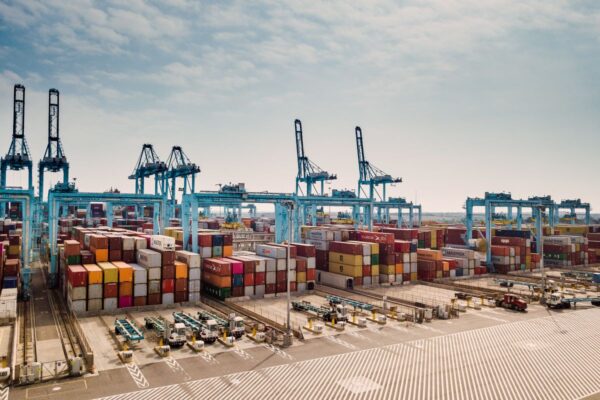Budget 2023-24: Implications for India’s Labor Market and Employment

Budget 2023-24: Implications for India’s Labor Market and Employment
The ‘population dividend’ phase in India’s history lines up with Amrit Kaal, or perhaps the latter will be manifested by the former. India has an impressive pool of talent thanks to the large percentage of its population that falls in the prime working years of 18-64. We can rapidly change our nation’s economic demography in the coming decades. To fully capitalize on this once-in-a-lifetime chance, we need a supportive policy, an abundance of capital, a pool of talented individuals, and the widespread adoption of new technologies.
In retrospect, it is clear that the Industrial Revolution was crucial to the modernization of many economies. India needs to use the ‘Digital Revolution‘ to its advantage while also pursuing non-linear growth in human capital. If we want to generate a multiplier effect, we need to throw out all of our current assumptions about what constitutes acceptable productivity and start from scratch. Technology’s widespread adoption across the economy’s three pillars—agriculture, industry, and services—has made way for a fertile environment for the integration of creative problem-solving, technologically enabled high productivity, and human capital enhancement.

In her presentation of India’s budget last year, Finance Minister Nirmala Sitharaman promised six million new jobs within five years. It’s complicated and won’t work. As a result of its commitment to being business-friendly, India has been able to grow its startup ecosystem, create more jobs, and become more economically independent through a variety of partnership models. Accelerating the job market, however, requires focusing on three fronts: raising the GER for higher education, making sure students are marketable upon graduation, and encouraging companies to invest in the ongoing training of employees in essential and technological skills.
The average annual growth rate (GER) of the higher education sector is close to 27% at present. We can improve with only 1.3 crore students entering higher education each year. We will have a gap that cannot be filled without immediate enrollment improvement. In 2021, it was predicted that 25% of our population would be under the age of 14. We must prepare them for higher education as they approach it. There should be no gaps between the sexes in terms of economic stability or educational opportunities. Digital platforms are a fantastic tool for closing the access gap, optimizing the cost of higher education, and bringing high-quality education to students in the most inaccessible locations on demand.
Our graduates’ level of preparedness for the workforce remains a problem for many companies. Spending between four and twenty-four weeks is necessary to guarantee even minimal productivity. Creative approaches, such as the “Degree Apprenticeship” program, “are the silver bullet that will increase graduates’ chances of finding work. During the undergraduate term, programs that facilitate “learning by doing” and incorporate “on-the-job learning” will provide the necessary training. Companies can use this to build long-term pipelines of qualified employees.
In the long run, every rupee we invest in training and education multiplies by 12 to 17, boosting our GDP at an accelerating rate. While corporations do their part, workers in the information technology, service, and new economy sectors need to re-skill and learn new abilities to remain competitive. Companies should allocate the same amount of resources to training employees as they do to R&D and capital expenditures. The costs incurred by individuals for advanced education and skill development should be tax deductible.

The economy is robust and is expected to expand, though the rate of expansion could be slowed by external factors. As companies rebalance their investments in human capital, layoffs could be imminent in some areas. India’s progress has been greatly aided by the “China plus one” “manufacturing and high-technology business tactics after a short drop in demand from international clients. The technology and services sector usually picks up speed.
In sum, the budget should allow for the reinvestment of retained earnings to spur growth, provide policy support for innovation to increase GER, and incentivize the use of capital to enhance the skills of the labor force.
The Reasons Why Logistics Industry Should Be A Priority In The 2023 Budget
The logistics industry in India has been through a lot in the past three years, and the recovery from the pandemic has added new challenges to the mix. According to those who have a stake in the matter, the workforce is currently a major obstacle.
Zaiba Sarang, the co-founder of iThink Logistics, says there aren’t enough delivery drivers in the business world. When the holiday traffic volume was at its peak, the problem became much worse. The co-founder of the Mumbai-based courier aggregation service says that logistics companies had trouble meeting the expected delivery time, which made customers unhappy.
Sarang claims that the logistics industry is the most disorganized and fragmented in the country. It has to be simplified so that business operations can run more smoothly and efficiently. CEO of KSH Logistics, which offers storage and transportation services, has observed an increase in shipment requests. However, there is a severe shortage of jobs and qualified drivers in the transportation sector.
In order for the country’s logistics industry to meet the demands of the expanding economy, it requires an influx of truck drivers, forklift operators, skilled warehousing workers, and other personnel. Stakeholders claim that the government should take advantage of the upcoming budget to fix these and other problems plaguing the vital logistics industry that supports all other commercial activity.
Some authorities have also contrasted recent unemployment reports with the requirement for improved manpower management in logistics. They go on to say that the budget can outline the various channels necessary to train, hire, and retain workers in such a way that the sector can benefit in the long run. However, the difficulty lies in encouraging people to consider logistics-related careers and in making logistics-related jobs desirable.
Stakeholders emphasize the necessity of streamlining the industry.
According to KSH Logistics’ Tiwari, rising fuel costs are another issue affecting the logistics industry. Since it is inconvenient to use the railroads in India due to crowding, transfers, and high fares, most people travel by road. However, due to recent fluctuations in fuel prices, transportation costs have increased dramatically and are a major strain for logistics firms.
Tiwari also brings up the limited availability of warehouse space and its dismal condition. He says that creating a large integrated warehousing space is discouraged by factors such as “the availability of quality manpower, high warehouse rentals, and higher interest rates on capital,” and that there is a need to streamline the processes at various points in the sector.
According to industry experts, India’s logistics costs are relatively high relative to the country’s GDP, so any reduction in that number would have a significant impact on the sector’s ability to function, create jobs, and expand. The government has been advocating for a reduction in the logistics cost-to-GDP ratio from the current level of about 16% to around 10% by 2024. This would make the country more competitive with developed or equivalent economies.

When asked how the upcoming budget can help, Tiwari said that the government could take care of important problems like rising rental costs, fuel, and transportation costs, broken communication, and infrastructure costs, all of which have made logistics services much more expensive to run.
There needs to be a system of incentives in place. For instance, those who construct warehouses should be compensated, and the tenant should pay much less per square foot for the space. He suggests that the government provide financial incentives to warehouses that implement automation systems and to businesses that invest in automation technology.
Stakeholders recognize the need for more technology. With this, most businesses can compete with any major international competitor. However, the price tag is quite steep, so not all businesses can afford it. Some have speculated that smaller logistics firms will be encouraged to adopt new technologies if the budget includes incentives for the costs of automation.
As the founder and managing director of logistics and supply chain service provider Varuna Group, Vivek Juneja emphasizes the critical need for immediate investment in cutting-edge technology. He predicts that the upcoming budget of 2023 will put an emphasis on utilizing data-driven technologies to make India’s logistics ecosystem even more advanced, integrated, cost-effective, and reliable.
Since there is such a severe shortage of skilled personnel and specialists in this field, the MD of Varuna Group also emphasizes the need to improve human resource skill sets. ” We require educational facilities that can educate students on cutting-edge technologies and encourage research, development, and new product creation. Tiwari argues that the industry should encourage gender equality in the workplace and diversify its workforce to include people of all identities.
According to Sarang, the government should allocate funds to build more multi-modal logistics parks. We expect a Rs 2 lakh crore investment in port infrastructure this year to help combat logistics inefficiencies, she says, because “this year, the primary focus will be on making the industry more efficient.”
In addition, business leaders are eagerly anticipating the rollout of the National Logistics Policy, which was announced in September 2022 with the goal of streamlining processes and reducing logistics costs.
NLP was developed to bring cohesion to a field that had become too dispersed. Equally, we think the government should figure out a way to centralize the budgeting procedure for all the different departments. Sarang argues that a regulatory agency should be funded in the upcoming budget “to monitor and manage grants, sanctions, loans, or direct service provision, as well as any other strategies associated with this policy.”
Edited by Prakriti Arora




